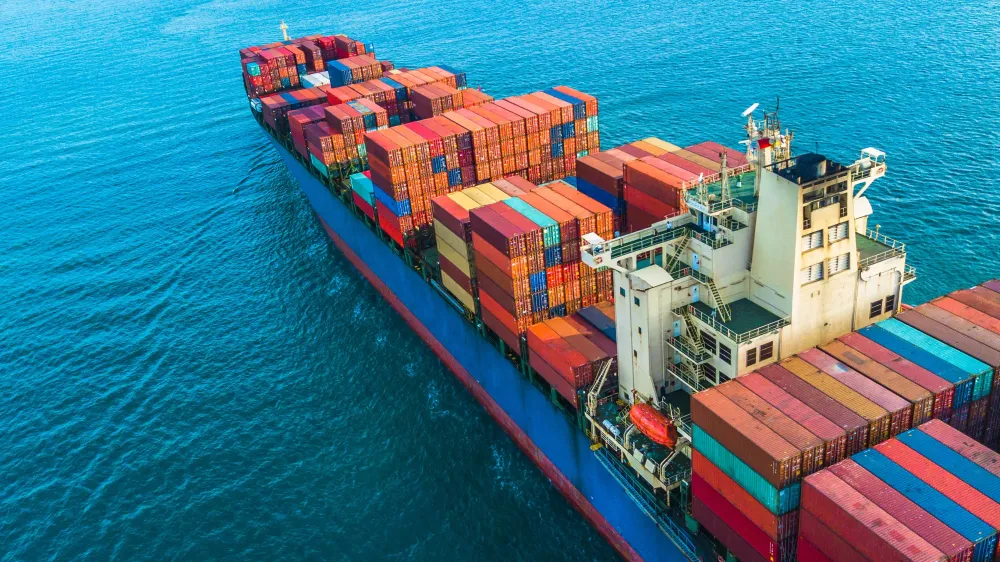
Indian Economy
India's Export Boom and 7 Sectors Driving Growth
India must diversify exports into high-potential sectors like automotive, renewables, agri-products, textiles, electronics, and more for growth and innovation.
By India Index
4 min read
India is one of the fastest-growing economies in the world, with a GDP of $2.9 trillion in 2020. India’s exports play a vital role in its economic growth, contributing to 18.8% of its GDP in 2020. However, India’s export basket is largely dominated by traditional sectors such as textiles, gems and jewelry, petroleum products, and agricultural products, which account for more than 50% of its total exports. These sectors face challenges such as low-value addition, high competition, and environmental concerns.
India must diversify exports into high-potential sectors like automotive, renewables, agri-products, textiles, electronics, and more for growth and innovation. This article delves into these sectors, their global prospects, and challenges, emphasizing the need for value creation through tapping into emerging markets.
Automotive and Auto Components
The automotive and auto companies industry plays a crucial role in India's economy. Despite challenges in Europe and the US, India's auto component industry expects a 20% rise in exports in 2022-23. India is emerging as a global hub for auto component sourcing, with over 25% of its production being exported annually. Auto component exports are expected to reach $30 billion in FY26.
With the growing demand for electric vehicles (EVs), India has the potential to become a major player in manufacturing EV components. By 2025, it is estimated that 4 million EVs could be sold each year in India, and this number will reach 10 million by 2030. Mexico, Canada, and China are the top export markets for automotive parts from the US.
India has been expanding its export markets for auto components, focusing on countries like Germany and Japan.
Renewable Energy Equipment
The renewable energy sector is gaining momentum globally. India's exports of solar panels and components grew by 5.2% to Rs 1.61 lakh crore ($20.1 billion). The demand for solar energy is increasing, creating opportunities for exporting solar panels and related components. India has a significant presence in the wind energy sector, and there is potential for exporting wind turbine technology and components.
The global demand for wind energy equipment is expected to grow, providing opportunities for Indian exporters. The renewable energy sector is witnessing strong growth worldwide, driven by the need to reduce carbon emissions and transition to clean energy sources.
This presents a favorable market for exporting renewable energy equipment, including solar panels, wind turbines, and related components.
Agri-Processed Products
India has a rich agricultural sector and opportunities for exporting processed agri-products. India has a diverse range of processed foods and beverages, including spices, condiments, and other agri-products. There is a growing demand for Indian food products in international markets, especially for their unique flavors and authenticity. Indian spices and condiments are renowned worldwide for their quality and taste.
Exporting processed agri-products, such as ready-to-eat meals and canned fruits, can also be a lucrative opportunity. There is a rising demand for health-conscious and organic food products in export markets. Indian exporters can tap into this trend by offering organic and healthy agri-processed products.
Technical Textiles
Technical textiles have diverse applications in various industries. The demand for technical textiles is increasing globally, driven by industries such as healthcare, construction, and defense.
India has the potential to become a major exporter of technical textiles due to its manufacturing capabilities and competitive advantage. Technical textiles find applications in sectors like healthcare (medical textiles), construction (geotextiles), and defense (protective textiles).
Exporting technical textiles for these industries can be a lucrative opportunity for Indian manufacturers. High-performance textile materials, such as fire-resistant fabrics and bulletproof vests, are in high demand globally. Indian exporters can capitalize on this demand by producing and exporting high-quality technical textiles.
Chemicals and Specialty Chemicals
The chemicals and specialty chemicals industry offers export potential. India has a competitive advantage in producing specialty chemicals, which are used in various industries such as pharmaceuticals, agrochemicals, and personal care. Exporting specialty chemicals can be a profitable opportunity for Indian manufacturers.
The pharmaceutical industry relies heavily on specialty chemicals, particularly pharmaceutical intermediates, and fine chemicals. Indian manufacturers can target the export of these chemicals to cater to the global pharmaceutical market. Exporting chemicals requires compliance with international regulatory standards and quality control measures. Indian manufacturers should ensure adherence to these standards to maintain the reputation and competitiveness of their products.
Jewelry and Gemstones
India has a rich tradition of jewelry and gemstone exports. India is known for its traditional jewelry, including gold, diamond, and gemstone jewelry.
Traditional Indian jewelry has a strong demand in international markets, especially among the Indian diaspora. Contemporary jewelry designs are gaining popularity in export markets. Indian jewelry manufacturers can tap into this trend by offering modern and innovative designs.
There is a growing demand for ethical, sourced, and sustainable jewelry. Indian jewelry exporters can adopt ethical practices, such as responsible sourcing of gemstones and fair trade practices, to cater to this demand.
Electronics Manufacturing
The electronics manufacturing sector offers export opportunities. India has been focusing on promoting electronics manufacturing and exports.
Exporting electronics and electronic components can contribute to the growth of the Indian electronics industry. India has a large consumer base and a skilled workforce, making it an attractive destination for electronics manufacturing.
With government initiatives like 'Make in India', there is potential for Indian manufacturers to expand their exports in the electronics sector. The electronics industry is highly competitive, with countries like China dominating the market. Indian manufacturers must focus on quality, innovation, and cost competitiveness to succeed in the global electronics market.
E-Commerce and Handicraft
E-commerce platforms provide opportunities for exporting handicrafts and artisanal products. India has a rich history of handicrafts and artisanal products, with a strong demand in international markets. E-commerce platforms provide a global approach for Indian exporters to showcase and sell their products.
The rise of dedicated trade platforms has given Indian artisans much-needed visibility in domestic and global markets. Technology has enabled inclusive growth in the handicraft industry, with e-commerce providing seamless access to consumer goods.
Conclusion
Diversifying export sectors can provide numerous benefits for India's economy. By tapping into emerging sectors such as renewable energy equipment, technical textiles, and electronics manufacturing, Indian manufacturers can expand their global reach and contribute to the growth of these industries.
However, navigating challenges in these sectors, such as competition and regulatory compliance, requires careful planning and execution. Government policies can play a crucial role in promoting diversification and supporting Indian exporters in these emerging sectors.
💡 Want to use automation for your teams?
Was this article helpful? 💡


